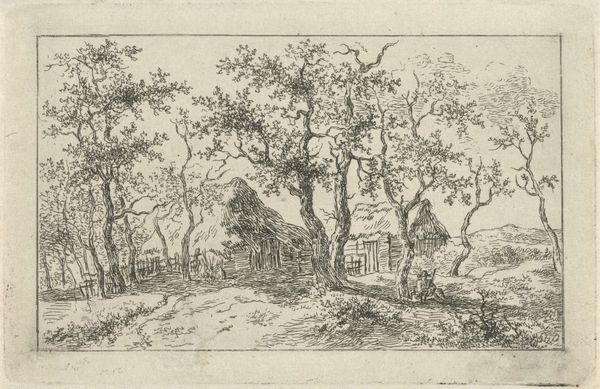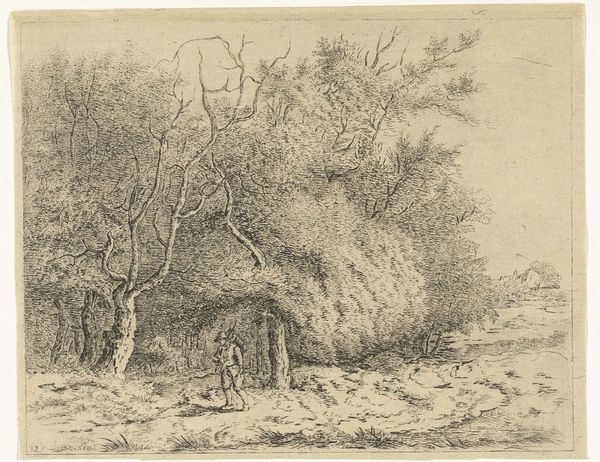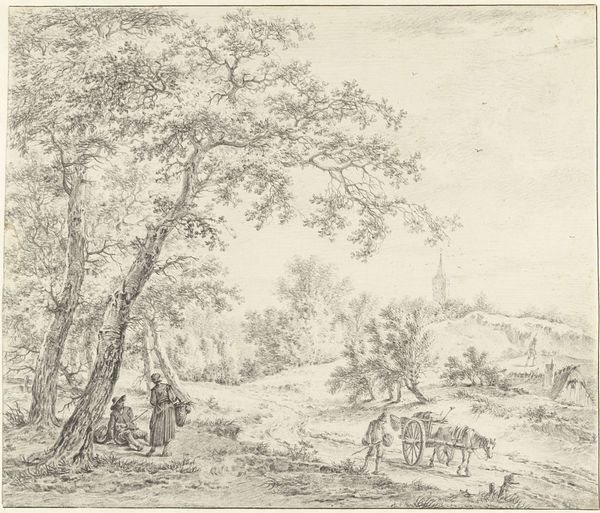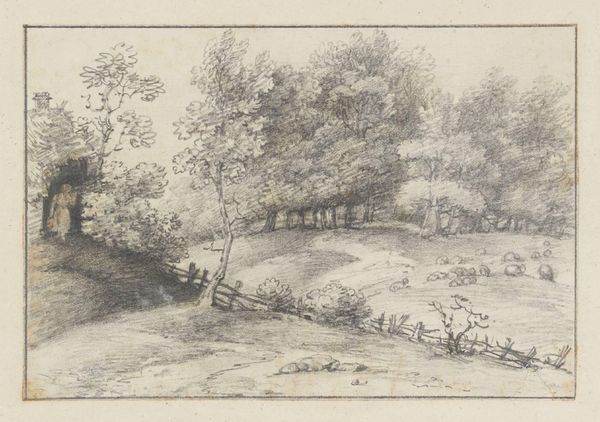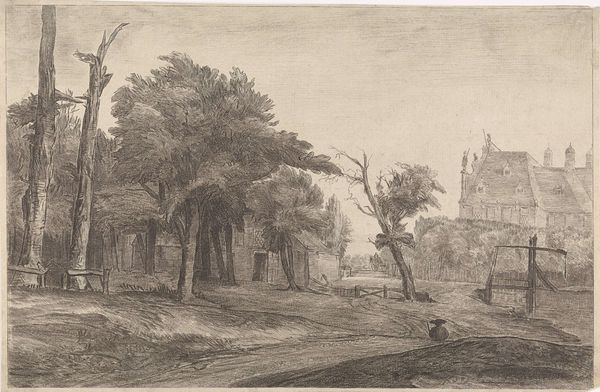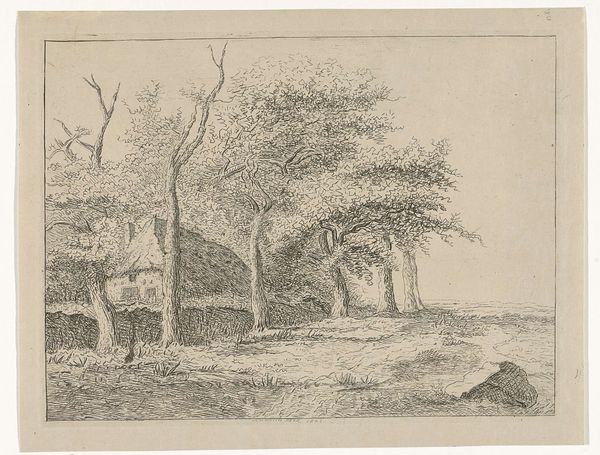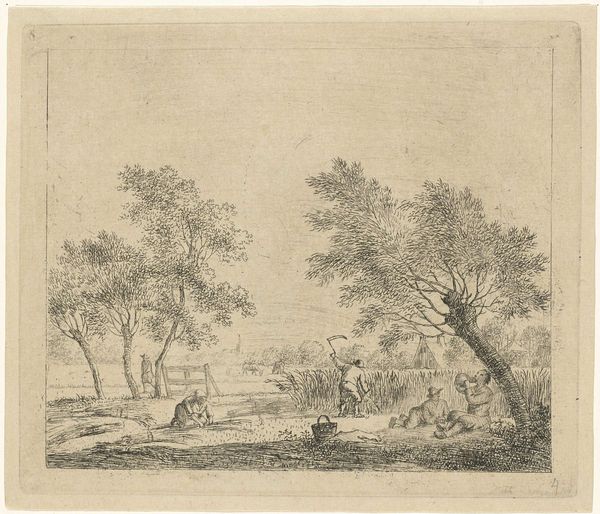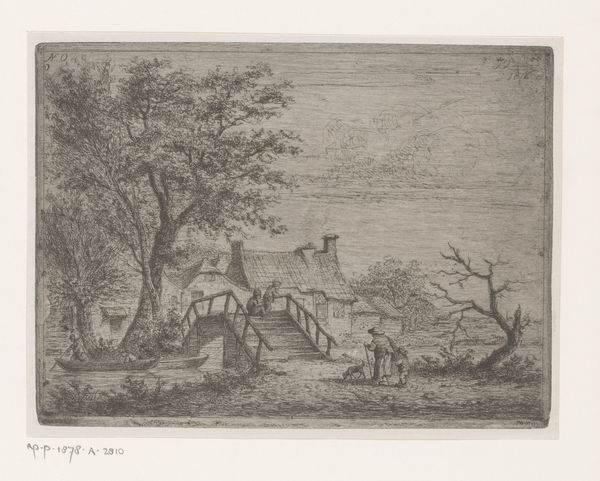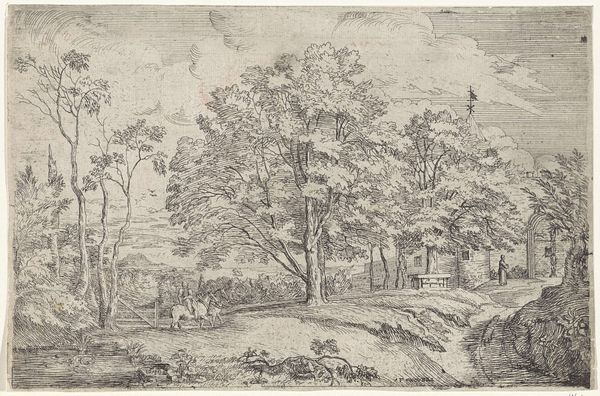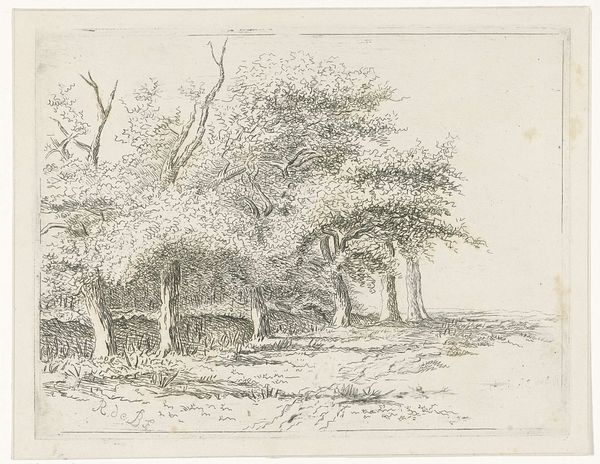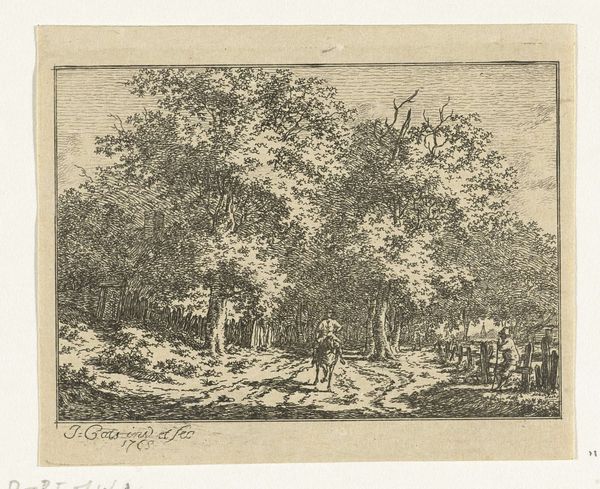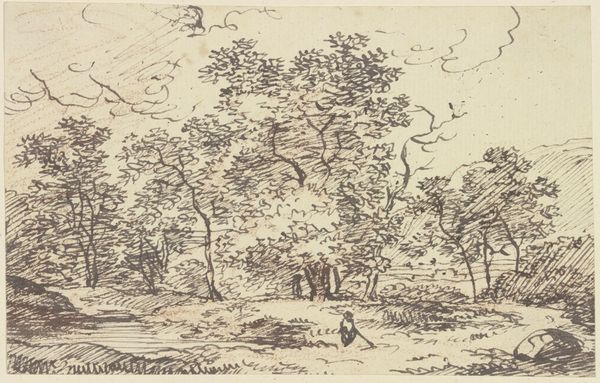
drawing, print, etching
#
drawing
# print
#
etching
#
landscape
#
genre-painting
#
realism
Dimensions: height 60 mm, width 78 mm
Copyright: Rijks Museum: Open Domain
Curator: Let’s turn our attention to this unassuming yet compelling print titled "Man with Child at a Farm" by Ernst Willem Jan Bagelaar. The work dates from between 1798 and 1837. What are your immediate thoughts? Editor: It feels like a half-remembered dream. There's a nostalgic haze to the whole scene. Almost melancholic, with those densely packed trees and that slightly worn farmhouse. Like something precious, but fragile. Curator: The realism, filtered through the artist's perspective, really invites critical readings of agrarian life in the Netherlands during the late 18th and early 19th centuries. We see an idealized version of rural existence. The relationship between man and child could even suggest something about the familial and social structures of the time, right? Editor: Precisely. It also gives the sense of peering into something forbidden, you know, or deeply private. Bagelaar captures the kind of simple poetry in these rural scenes. The thatched roofs almost melt into the foliage around them. The scene makes you think about all kinds of lives unfolding simultaneously. Curator: The artist chose the etching technique very carefully to create detail and light. Note how he is managing the light falling on the buildings, casting them partially in shadow. It seems he used this medium to emphasize not just representation but mood. The etching captures the intricate texture of the thatch roof. What sociopolitical undertones do you detect? Editor: Perhaps the resilience or tenacity of the family and of people like them in general. Maybe I am getting carried away here... But I just find this to be more than a landscape genre painting, the piece seems emotionally driven! Curator: I would also argue it is difficult to analyze art outside of social context, it has historical implications and is open to contemporary theory. But you're right; it can all boil down to an intensely personal response to a time and place. Editor: Thanks for shedding light on it. Now, having spent this time observing its finer points, it leaves me a deep, strangely poignant, feeling. Curator: Absolutely. Art invites us into complex discussions and sometimes evokes our deepest sentiments.
Comments
No comments
Be the first to comment and join the conversation on the ultimate creative platform.
